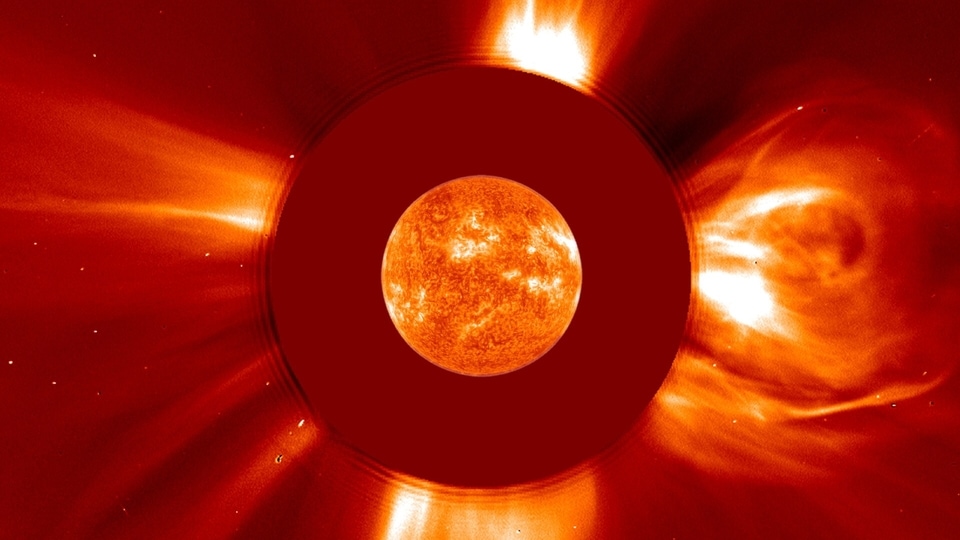Do you know when the biggest solar flare ever was recorded? NASA reveals
- According to NASA's SOHO project, biggest ever solar flare was recorded on April 2, 2001, with massive speed of 7.2 million kilometers per hour.

From time to time, solar flares hit Earth. These are shot off by the Sun and if the Earth was in the path, it took the brunt of the blow. Fortunately, space is a vast expanse of nothingness, and most of the time when the Sun does shoot off solar flares, they are not directed at the Earth. But do you know about the biggest solar flare on record? On April 2, 2001 at 4:51 p.m. EDT, Solar and Heliospheric Observatory (SOHO) satellite observed the biggest ever solar flare on record. This solar flare was way more powerful than the one on March 6, 1989, which caused the disruption of electricity grids in Canada.
For those who don't know, Solar flares are the tremendous explosions in the atmosphere of the Sun which are capable of releasing as much energy as a billion megatons of TNT. The sudden eruption of the magnetic energy can accelerate solar particles to move almost at the speed of light, having temperature of tens of millions of degrees.
According to the SOHO mission, a collab between NASA and the European Space Agency, the biggest solar flare ever was ejected from the active region near the Sun's northwest, which threw up solar particles at a massive speed of roughly 7.2 million kilometers per hour. It was the biggest solar flare ever recorded and that means it packed a massive potential to do damage. Fortunately, the solar flare was not directed towards Earth.
Although it missed the Earth, the largest solar flare ever caused an R4 radio blackout. Rated by the NOAA SEC, an R4 radio blackout is the second most severe classification after R5 blackout, NASA said. These classifications measure the disturbance caused by the flare in the radio communications.
The biggest flare and solar ejection resulted in the generation of a high-velocity particle storm, which accelerated the number of particles with ten million electron-volts of energy in the space near Earth, almost 10,000 times greater than normal, reveals NASA.
Importantly, solar flares of very severe nature can affect Internet on Earth. According to a recent report, the undersea cables that circle the globe and connect the world to the Internet are vulnerable to massive solar flares. While the cables will be unaffected, it is the connectors that will cease working thereby disrupting the Internet. According to researcher Sangeetha Abdu Jyothi, "Long-haul cables have repeaters to boost the optical signals spaced at intervals of 50 150 km which are powered using a conductor. These repeaters are vulnerable and can lead to the cable being unusable."
However, this can be caused by once-in-a-century type of solar events. Can it happen in the near future? Abdu says, "The probability of occurrence of extreme space weather events that directly impact the earth is estimated to be 1.6% to 12% per decade."
Catch all the Latest Tech News, Mobile News, Laptop News, Gaming news, Wearables News , How To News, also keep up with us on Whatsapp channel,Twitter, Facebook, Google News, and Instagram. For our latest videos, subscribe to our YouTube channel.
































